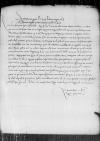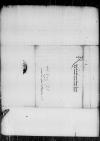Letter #2565
Sigismund I Jagiellon to Ioannes DANTISCUSVilnius, 1542-05-15
| received Heilsberg (Lidzbark Warmiński), 1542-06-07 Manuscript sources:
| ||||
Text & apparatus & commentary Plain text Text & commentary Text & apparatus Excerpts concerning Dantiscus' travels
Reverendo in Christo Patri, domino
Reverende in Christo Pater, sincere nobis dilecte.
Non est clam Paternitatem Tuam iam inde ab annis aliquot contractum esse matrimonium inter serenissimum
Aequum quidem erat, ut ea de re temporius ad Paternitatem Tuam scripsissemus, sed cum ipsi quoque non satis certum habuerimus, utrum ad praefinitum diem venire nobis
Scripsimus quidem ad serenissimum dominum
Paternitas Tua interim se adornare ad iter velit, quod si quae prorogatio facta erit, serius quam ad 1542-07-01⌊diem primam Iulii1542-07-01⌋ venire poterit. Quod si quae prorogatio facta erit, serius quam ad diem primam Iulii venire poterit. Nunc ipsi hoc agimus, ut nostro Cracoviam reditu diem nuptiis praestitutum antevertamus. Ad quem, ut venire curet Paternitas Tua, nisi aliud aliquid de prorogatione facta certi audiverit, <hortamur>. Melius enim est, ut nos paratos nova nupta offendat. Facturus pro gratia nostra.
Ad mandatum s(acrae) or s(erenissimae)⌈s(acrae)s(acrae) or s(erenissimae)⌉ maiestatis regiae proprium


 BCz, 1601, p. 362
BCz, 1601, p. 362